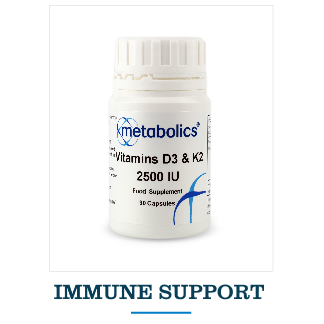Smoothies can be a nutritious breakfast option or snack but have you ever stopped to consider the nutritional profile of your morning drink? This week’s Nutrition News covers the latest in nutritional research including a study that evaluates the mix of fruits and vegetables in your smoothie and how different pairings can affect flavanol absorption and nutritional benefit.
Find out more.
What smoothie ingredients offer the greatest health benefits
Smoothies are a popular and convenient way of incorporating fruits and vegetables into a balanced diet. However, researchers from the University of California, Davis, have discovered that the combination of ingredients in a smoothie can significantly impact the body's ability to absorb beneficial nutrients. The study focused on polyphenol oxidase (PPO), an enzyme found in various fruits and vegetables, and its effect on flavanol absorption.
Flavanols are bioactive compounds that deliver heart health and cognitive health support, and are naturally occurring in ingredients like apples, pears, blueberries, blackberries, grapes, and cocoa—commonly used in smoothies. Lead author of the study, Javier Ottaviani, affiliated with UC Davis and Mars, Inc., aimed to understand how blending fruits affected flavanol availability.
The study, which was reported by Science Daily in the article “The right combo: Getting the most health benefits from fruit smoothies”, compared a banana-based smoothie with high PPO activity to a mixed berry smoothie with low PPO activity. Blood and urine samples were analysed for flavanol levels after consuming these samples. Surprisingly, the banana smoothie led to an 84% reduction in flavanol levels compared to the control, indicating that the banana's PPO activity had a significant impact.
Ottaviani emphasised the importance of food preparation and combination on nutrient absorption. He suggested that individuals aiming for the 400 to 600 milligrams of daily flavanols recommended by the Academy of Nutrition and Dietetics, consume smoothies blending flavanol-rich fruits, like berries, with low PPO activity ingredients such as pineapple, oranges, mango, or yoghurt. Bananas, while still nutritious, should be consumed separately or combined with other ingredients low in flavanols.
These findings may prompt further investigation into the effects of food preparation on nutrient absorption. As research continues in the field of polyphenols and bioactive compounds, such insights could reshape dietary habits and enhance the health benefits derived from the foods we consume.
Omega 3 supports vision in preterm babies
A groundbreaking study conducted at the University of Gothenburg in Sweden, reported by Science Daily in the article “Preterm babies given certain fatty acids have better vision” has revealed that providing preterm infants with a combination of omega-3 and omega-6 fatty acid supplements improves their visual function by the age of two and a half. The research focused on 178 extremely preterm babies, born before the 28th week of pregnancy, across neonatal units in Gothenburg, Lund, and Stockholm between 2016 and 2019.
In the study, half of the infants were administered preventive oral nutritional supplements containing both arachidonic acid (AA), an omega-6 fatty acid, and docosahexaenoic acid (DHA), an omega-3 fatty acid. Importantly, neither AA nor DHA are typically included in the routine supplements given to extremely preterm babies immediately after birth.
The researchers, led by Pia Lundgren, an associate professor in pediatric eye research at the University of Gothenburg's Sahlgrenska Academy and a chief physician at Sahlgrenska University Hospital, had previously discovered that this combined supplement effectively reduced the risk of retinopathy of prematurity (ROP), a sight-threatening eye disease, by 50%.
This recent study evaluated the visual development of these children at two and a half years of corrected age. The results demonstrated enhanced visual function in those who had received the combination supplement, regardless of their ROP history. Intriguingly, the improved visual development wasn't solely attributed to the retina's benefits; the supplement also seemed to enhance the brain's ability to process visual information.
The issue of nutrition and supplementation for extremely preterm infants is a critical concern in neonatal care worldwide. Although Sweden currently lacks precise guidelines on fatty acid supplements for these babies, the study's findings are already influencing guideline revisions.
Future studies will delve into the cognitive and neurological aspects of development in the same group of children. Lead researcher Ann Hellström, Professor of Pediatric Ophthalmology at the University of Gothenburg and Sahlgrenska University Hospital, emphasises that this study sheds light on the positive, lasting effects of these nutrients on eye health and opens doors to exploring its broader impacts on cognition and neurology. While the results are promising, further research is needed to better assess nutrition recommendations for preterm babies.
Are the minerals in soil affecting our health?
A recent study published in Scientific Reports and reported by News-Medical.Net in the article “Is soil mineral content impacting human growth and nutrition?” has explored the connection between soil mineral content and the health of both pediatric and adult women populations in India.
Micronutrient deficiency can have adverse effects on children's learning abilities, IQ, motor skills, and immune system function. Developing countries face higher risks due to low levels of bioavailable minerals in crops. Countries including China, Turkey, and Finland have employed agronomic fortification to increase mineral concentrations in crops, focusing on trace minerals such as zinc, iodine, and selenium to improve human mineral status.
With India being home to over a third of the world's malnourished children, it is a crucial location for studying micronutrient malnutrition. The availability of georeferenced data on health, nutrition, and soil nutrients presents an opportunity to understand the role of soil factors in health and food security.
In this cross-sectional study, researchers linked health data from almost 300,000 children and one million adult women across India with over 27 million soil assessments. They examined the relationship between the zinc content of soil and child height growth and the iron content of soil and its impact on haemoglobin levels.
Results showed a positive correlation between soil zinc content and children's linear height growth, and between soil iron content and haemoglobin levels. The link between soil zinc content and child stunting was particularly strong, indicating a decrease in stunted and underweight children. Soil zinc content was also tied to an increase in female height, however, the relationship between soil zinc content and adult women's height was less robust.
The study's findings highlight the impact of soil mineral content on human health and nutritional status in India. Agronomic fortification could be a valuable strategy to address micronutrient deficiency. Additionally, the relationship between soil iron content and haemoglobin levels has significant implications for addressing anemia, which is a prevalent issue in India. This research contributes to understanding the complex environmental factors influencing health and nutrition outcomes.
Share your thoughts
Agree with the findings in this week’s Nutrition News? Share your thoughts with us on Facebook and Twitter.
 Alison is Director and Founder of Metabolics who writes about Metabolics updates, events and natural healthcare. Her experience and passion for natural supplements and healthcare comes from her years of experience as a practising osteopath, having founded Metabolics in her search for high quality, natural products in her own work. Alison has been a qualified and practising Osteopath since 1981 and regularly gives seminars on a range of healthcare subjects to the wider practitioner community helping share her knowledge and experience.
Alison is Director and Founder of Metabolics who writes about Metabolics updates, events and natural healthcare. Her experience and passion for natural supplements and healthcare comes from her years of experience as a practising osteopath, having founded Metabolics in her search for high quality, natural products in her own work. Alison has been a qualified and practising Osteopath since 1981 and regularly gives seminars on a range of healthcare subjects to the wider practitioner community helping share her knowledge and experience.

